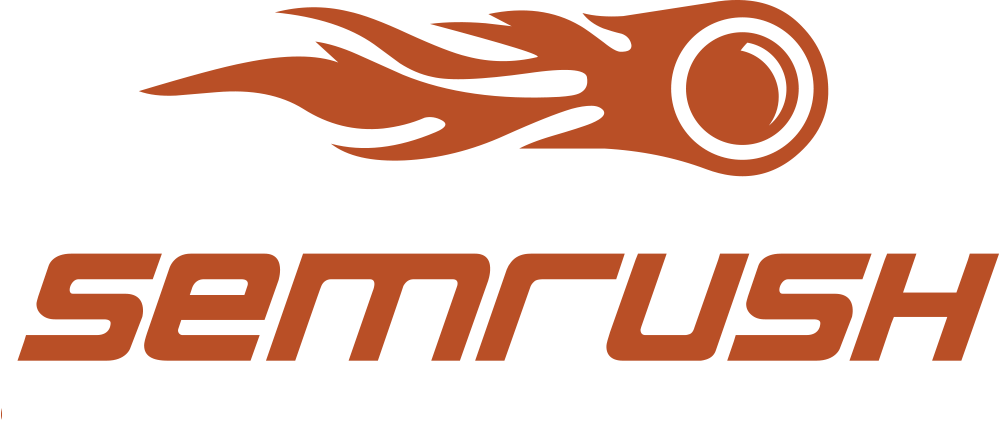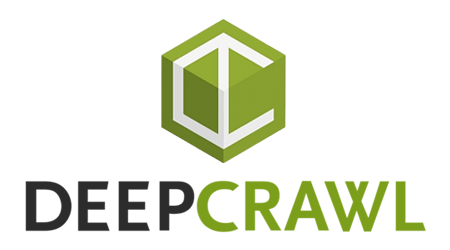E-Commerce SEO
SEO for eCommerce is about establishing a strategy that takes you to the top of Google rankings. Ranking organically in search results for the right keywords can give your business a boost. Keywords matched with user intent make it possible to engage with prospective customers at different stages of the sales funnel.
Statistics visitors gained with SEO can outpace those acquired by PPC campaigns. Overall, SEO can have the best return on investment (ROI). But – and here’s the rub – the website has to perform exceptionally well on SERP (Search Engine Results Page).
Being on the second page of search results has minimal benefits. The action is on the first page and the top organic result naturally gets the most clicks. This is where eCommerce SEO comes into play. Here’s your guide to the best practices for eCommerce SEO that will supercharge your business.
Analyze and Audit Your Website
An audit of the website gives up important information that can be used for optimization. This is generally the first step an eCommerce SEO firm would perform to optimize your website.
It is customary, but not necessary to start with an audit. Many of the concerns of an audit will be addressed in relevant SEO sections. A brand new website built with good practices can skip this step. However, if you’ve been in business for some time, the information gathered in the audit will be very helpful
Auditing involves checking the website for various factors. These include, but are not limited to, looking for broken links, website architecture, and content structure. Information on current ranking keywords and performance will also be uncovered.
There are a fairly large number of tools available for this purpose, both free and paid. Many paid tools offer some functionality for free. Though the really powerful features of these tools are reserved for paid users. Some tools that can be used are:
Notice the top three on the list here. You’ll find references to Semrush, Moz, and Ahrefs for several optimization strategies. These tools are not cheap, but if you know your way around their functions, they are excellent value.
Do Your Research
Competitor Research
Learn from your competition. There are things that they may be doing right and there’s always a possibility you could pick some tips. See what keywords your competitors are targeting. Look for the Domain Authority (DA) and Page Authority (PA) of their websites. If their DA/PA are way higher than yours, it is a better idea to not engage them with the same keywords.
However, if you are in the same league, it’s good to compete! Look for blogs and websites linking to the competition. You can attempt blogger outreach and see if those websites would be willing to link to you too. There’s also a benefit to learning how your competition manages page listings and the sitemap.
It’s worthwhile to look for businesses that operate in other countries. They are not your direct competitors, but learning from them can be just as helpful.
Keyword Research
Good keyword research forms the basis of any viable strategy. You can use the tools mentioned earlier (Moz, Ahrefs, Semrush) to check the search volume and difficulty for relevant keywords. Google AdWords Keyword Tool is a free and extremely powerful tool in finding keywords.
When you do the research, remember to check the numbers for your region or country. Using global trends or search data for another country is not going to be helpful.
When you do the research, remember to check the numbers for your region or country. Using global trends or search data for another country is not going to be helpful.
Using this strategy, you can form a list of keywords with decent search traffic but low competition.
Avoid keywords that are dominated by big brands and industry titans. As an example, though the search volume for “men’s shoes” is stunning, it is dominated by top brands and heavyweight retailers.
An average eCommerce site cannot hope to hit the first page of Google with that competition.
So, being pragmatic is the way forward. Carefully make a list of keywords where you can rank. If the audit showed some pages with a good ranking, include them too.
You’ll find hundreds, if not thousands of these keywords. It is time to prioritize your keywords and match them with product pages. Optimizing for one keyword per page is a good strategy, but do try to include long-tail keywords as well.
Technical And Structural Optimization of Your eCommerce Website
Use SSL
Using an encrypted connection or security certificate gives a small bump to your SEO rankings. Customers and an eCommerce website interact at several levels. So deploy SSL site wide, not just on the payment page. It also boosts customer confidence in your site and can lead to better engagement.
Build A Fast-Loading Website
No one wants to sit around waiting for a page to load. Building a fast-loading website is one of the best practices for SEO.
An eCommerce website will usually have several images, content, and information to show. Employing a fast server and/or CDN to deliver content can be helpful. Additionally, get creative with asynchronous or deferred loading of scripts and some images. Avoid bloat, but don’t sacrifice functionality. The top things to consider are:
- The web server should have a fast response time.
- Use CDN where necessary.
- Defer loading of some scripts and/or images.
- the website for mobile.
Structuring Your Website
A proper website structure results in good SEO for eCommerce. Ideally, any product page on the website should not take more than three clicks from the homepage. In most cases, the homepage of a website has the highest Domain Authority and Page Authority.
By keeping pages within three clicks of the homepage, some of that authority and “link juice” can flow to individual product pages. As the website builds trust and gains more authority, this setup allows the product pages to rise through SERP with relative ease.
An example of this structure would be:
Homepage > Category Page > Sub-category > Product Page There are several ways to achieve these results. If during research you see the competitor doing something better, copy them. A big part of learning SEO for your business is seeing how others approach similar problems.
The example mentioned here also makes it possible to use breadcrumbs. Google uses breadcrumb markup to categorize information, further incentivizing this approach.
Deploy Schema Markup
We’ve all seen the usual Google search results page. But for eCommerce websites that use proper Schema Markup, additional information is also visible. It is noticeable with one or more information points visible in search results. This information can include:
- Customer rating of the product.
- Ratings and reviews.
- Price.
- Availability.
- Image.
Clearly, that’s an excellent way to make your product stand apart from the multitudes of search results. At the very least, your search results will look as good as what a professional eCommerce SEO company can provide.
Managing the Page And Content
Content and Optimization of A Product Page
The product page has to cover all important information and content related to the specific product. Any worthwhile eCommerce SEO agency will suggest adding value to the page. This can be in the form of text, images, and relevant videos.
Images of the product should be crisp, clear, and worth the attention of the consumer. Even so, don’t forget to optimize the images. Compress and process images so they can be the lightest they can be, without losing quality. Give the image a descriptive alt text and filename.
The alt text should describe the image succinctly. Don’t just leave it at “Nike shoe”; consider adding the model, design, color, etc. Think of it as describing the product to another person. Don’t be verbose, but don’t shy away from detail either.
Similar principles apply to content. Make it a point to be as descriptive as possible, but avoid stuffing keywords and adding fluff. Some eCommerce websites end up uploading images of text as information. It can be difficult to read for the user, and impossible to be indexed by a search engine.
As part of the eCommerce SEO service, it is advisable to encourage reviews on your website and product page. They add more content and push up the indexability of the web page. Salient points are:
- Use original content as much as possible. Avoid copy-pasting descriptions from the manufacturer.
- Optimize images.
- Be descriptive with image alt text and filename.
- Encourage reviews from customers.
- Use meta tags for content
- Follow SEO URL best practices. Ideally, the page URI/URL should match product name and keyword.
Off-Page Optimization of The Website
Off-page optimization involves getting external links (backlinks) to the website. A strong social media presence is very helpful in this regard. An excellent strategy for eCommerce websites is to encourage blogs and product review websites to link to your product listings.
Many manufacturers list pages with “Where to Buy” the product. Connect with the manufacturer and have your website listed on these pages. Buying backlinks from some websites can be tempting, but such an approach should be avoided. Black hat strategies tend to be short-lived and do little good in the grand scheme of suitable SEO for eCommerce websites.
Engaging On Social Media
Having a social media presence helps to engage with your potential customers. It also helps increase citations and create greater awareness of your business. Depending on the local popularity of networks and your resources, you can have a presence on Facebook, Twitter, Pinterest, etc.
FAQs
What is eCommerce SEO?
SEO for eCommerce is the collection of strategies to have product listings show up organically at the top of search results. A successful approach requires attention to several points, which are:
Keyword Research:
Finding keywords that can be capitalized to reach the top of the search rankings.
Competitor Research:
Learning from the competition.
Site Architecture:
A carefully managed site architecture that reinforces selected keywords.
Technical SEO:
Making the website fast for the user and more efficient for search engines.
Local SEO:
Enabling eCommerce websites operating in a specific area to target their audience more effectively.
On-Page SEO:
Enabling eCommerce websites operating in a specific area to target their audience more effectively.
Off-Page SEO:
Acquiring external backlinks to build authority.
How eCommerce sites improve SEO?
For eCommerce search engine optimization, the goal is to drive organic traffic to the website. To improve optimization, websites follow traditional as well as specific methods. These are:
Traditional Methods
On-Page SEO:
Optimizing keywords for content, optimized images, meta tags.
Off-Page SEO:
Encouraging external links/backlinks. Vibrant social media presence and product reviews.
Technical SEO:
Fast-loading websites with good code.
Specific Methods
Keyword Research:
Striking a balance between keyword search volume and competition. Ideally, the target keyword should have a high search volume and low competition.
Content Marketing:
Creating content that answers to customer intent. This helps nurture a relationship between the customer and the website.
What is eCommerce sales?
The eCommerce or electronic commerce volume is steadily rising. It is estimated that by the end of 2020, the global eCommerce market will have crossed US$20 million in retail sales. This fast-growing market has opened up opportunities for entrepreneurs and businesses.
In an eCommerce sale, the customer purchases and often pays for the goods electronically. Though physical payment is also possible in many cases. Depending on the nature of the product and transaction, the purchased item may be made available electronically or shipped physically to the buyer.
Is SEO important for eCommerce?
Yes, and very much so. The importance of SEO for eCommerce cannot be overstated. For many eCommerce websites, SEO can be the most important driver of organic traffic. SEO involves a set of rules that search engines have developed to deliver more value to their customers.
Since most modern consumers make a search and research before committing to a purchase, SEO takes very important dimensions in business. Many businesses prefer to hire an eCommerce SEO consultant. Hiring a professional can be useful in improving rankings, though it is possible to perform some basic SEO tasks in a DIY approach.
If you are looking for the Ecommerce SEO to show your business in competitive Google results, we can help you do all of it.
For more information on Ecommerce Search Engine Optimization services, please contact our experts by clicking here; Contact Us.







